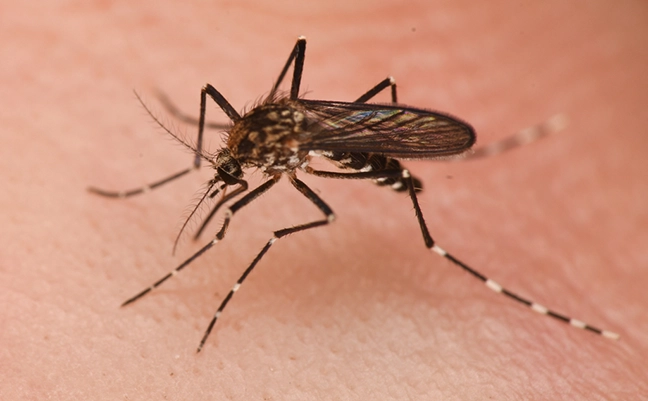
A study led by a researcher from the University of California-Berkeley found that western tree hole mosquitoes (Aedes sierrensis) adapted their overall ability to tolerate increased temperatures over multiple generations. Per a news release from the university, lead author Dr. Lisa Couper said that, “The most common prediction of how global change will affect mosquitoes and mosquito-borne disease is that populations will shift to higher altitudes and higher latitudes. That is assuming mosquitoes won’t adapt to heat. But mosquitoes have all sorts of adaptive capabilities.”
The study investigated how western tree hole mosquito larvae respond to varying temperatures by rearing them in both standard and elevated thermal conditions. The research involved sequencing the genomes of more than 200 individual mosquito specimens.
Genetic analysis of these populations revealed that mosquitoes developed in the high-temperature environment exhibited “chromosomal inversions” — significant structural alterations to their DNA. These genetic modifications indicate an adaptive response to hotter conditions. Notably, the research team observed a level of heat tolerance that “exceeds projected climate warming,” as detailed in their paper published in the Proceedings of the National Academy of Sciences of the United States (PNAS) in January.
“We are seeing the emergence of mosquito-borne disease in places we thought were too cold, and are seeing evidence that mosquitoes are emerging into previously colder regions,” Dr. Couper said. “But there is no evidence yet they are contracting in warmer regions.”
About western tree hole mosquitoes
As its common name implies, (Aedes sierrensis) breeds in tree holes, which according to California’s Napa County Mosquito Abatement District, are “water filled rot cavities or depressions found in many species of trees, especially oaks, bay laurel, eucalyptus, sycamore and elm. Any container near trees, that is partially filled with water and leafy debris, may also produce this pest. The eggs hatch when the tree hole or container fills with water. The adults emerge in March and remain in the area until early summer. This mosquito has a short flight range, is an aggressive biter, and is the primary vector of dog heartworm in Napa County.”
Western tree hole mosquitoes are identifiable by their distinct white scales contrasting sharply with their dark body. Key features include an unbanded proboscis (beak), white-banded tarsi (feet), and an abdomen ending in a pointed tip. They can form large populations and become pests in yards and occasionally in homes, particularly from April through August where there are many trees nearby.
Adults primarily feed on small mammals, but readily feed on larger mammals and humans when hosts are accessible. Peak feeding activity is observed at dusk, though host-seeking behavior can extend into daytime and nighttime hours.
Female western tree mosquitoes lay eggs within tree holes, tree crotches, and various containers containing damp, leafy organic matter. The district notes that these eggs “can survive for many years before hatching, with only part of each batch hatching during a single season. Larval development can take 10 days to five months to complete, depending on quantity of rainfall and other environmental conditions.”
Leave A Comment